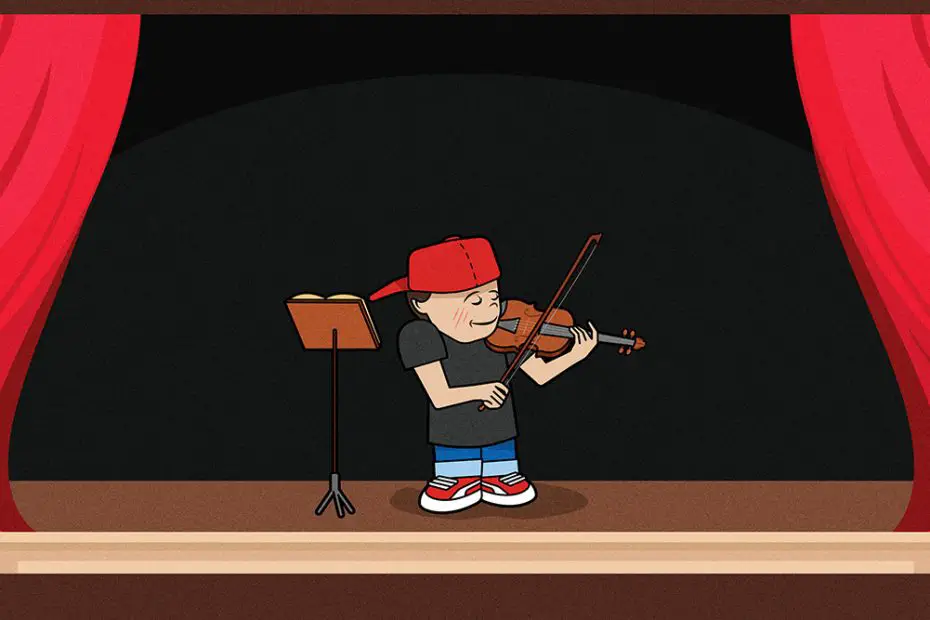While to a beginner the violin may seem to only be able to play one note at a time, due to the use of a bow, but that is simply not the case. Just like a guitar, piano or harmonica, a violin is more than capable of playing chords, and more commonly than you think!
This guide will cover violin chords in detail, what they are, how to play chords on the violin, and the best violin chord shapes you should learn as a beginner. Let’s get to it!
Table Of Contents
What Is A Chord?
A chord is made when two or more notes are played in unison. This can include strings left open, as well as three notes held down on the strings, depending on the chord. While there are several notes, there is a main note, called the root, that dominates the sound.
For example, a C Major chord contains three notes: C, E and G. C is the root note, E is the 3rd (three notes from the root), and G is the 5th (five notes from the root). All major chords are structured this way, and should be the very first chords you learn.
Is It Possible To Play Chords On Violin?
To the layman, playing chords on a violin may seem impossible. The motion of bowing the strings can appear to be only playing one note at a time. In fact, a trained violinist can play up to three notes at once during a single bow.
Commonly, a violinist will play two notes at the same time. This is technically not a chord, as it needs a minimum of three notes to be considered one, and is referred to as a double stop. When playing a double stop, it is key to keep the pressure of your bow the same on both strings, for an even tone.
Three note chords are the most common, as all major chords have a base of three notes. This is seen in the C Major chord in the previous section, a widely used staple of three-note chords for many different instruments.
When playing a three-note chord, there are two ways to attack it: pressing your bow down on the middle string firmly enough that it’s pressing the other two as well, or by slurring your notes and making a broken chord.
Slurring is when you play multiple notes on a single bow, so the notes flow into each other without any gaps. This divides, or “breaks” the chord into two separate parts. While it is possible to play three-note chords without slurring, it is impossible to play four-note chords without doing so.
Here is an excellent short video that demonstrates slurring chords on violin:
How Many Chords Does A Violin Have?
Technically speaking, there are over seven hundred possible chords consisting of three or four notes across all twelve keys. However, the vast majority of chords you will come across in music will be major and minor chords, of which there are twelve each.
Twelve major chords and twelve minor chords shaves seven hundred down to twenty-four, making it a rather straightforward task to learn them.
The easy part is that all minor chords are the same and all major chords are the same, respectively. This means that the note spacing of C Major (root note, 3rd note and 5th note) is the same as that of B Major.
After you master your first major chord or two, you will have an excellent feel for what a major chord sounds like.
The same practice applies to minor chords as well, as the note spacing in minor chords is the root note, followed by the minor 3rd (half-step lower) and the same 5th note as a major chord. For example, C minor consists of C, E flat and G, compared to its C Major counterpart of C, E and G.
What will change between chords are the finger shapes you’ll use on the fingerboard.
What Contexts Do Violinists Play Chords?
Chords are most commonly seen in classical music. They are typically employed on violin to emphasize a specific point in the composition, most often during the ending. In this situation, the chords are the focus of the music.
In country music, however, the violin is played more rhythmically and uses chords to accompany the lead singer. In this context, the chord is supplementary and shouldn’t dominate the sound and overpower the singer’s voice.
Knowing your chords will allow you to play in vastly different musical styles and genres.
Eight Chord Shapes You Should Learn Today
As a right-handed violinist, your left hand is the one on the fingerboard pressing the strings to play notes and chords. Your fingers on this hand, just as it is for guitar, are numbered from one to four, which you need to know when learning chords so your fingers are playing the correct notes in the shape.
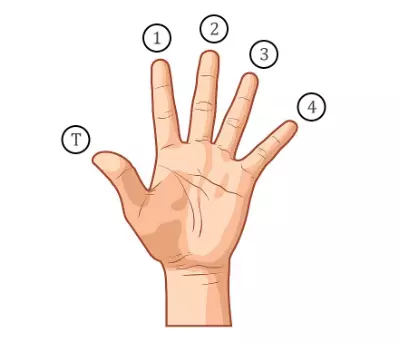
Credit: Lessons.com
As seen in the diagram above, the index finger is one, middle is two, ring finger is three, and the pinky is four. The thumb is not used to play the strings, as its purpose is support and is not numbered.
These chords will all be in the context of the standard tuning for violin, which consists of G-D-A-E.
1. C Major
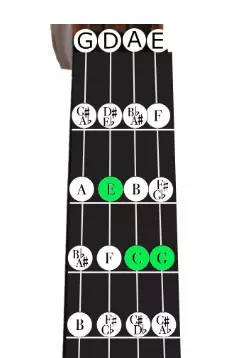
Credit: Violin Lounge
As we covered earlier, C Major is an extremely common chord for most instruments, including violin. The notes for C Major are C-E-G and to play this you will put your first finger on the E on the D-string, your second finger on the C of the A-string, and your third finger plays the G on the E-string.
2. C minor
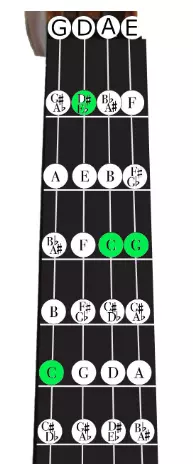
Credit: Violin Lounge
C minor is a bit more difficult than its major counterpart, but it can be simplified. The notes are C, E flat and G.
While you can play both C notes in the diagram, one higher in pitch than the other, but if you want to only play three notes than place your first finger on E flat on the D-string, your second on the C of the A-string, and your third finger covers the G on the E-string.
3. D Major
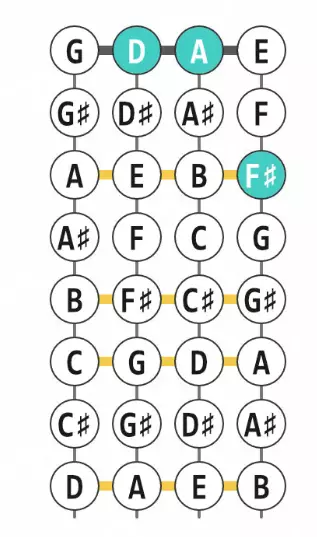
Credit: Violin Inspiration
D Major is possibly the most used violin chord, mainly for its ease and simplicity. All you have to do is leave the D and A-strings open while you play the F sharp on the E-string with your first finger.
4. D minor
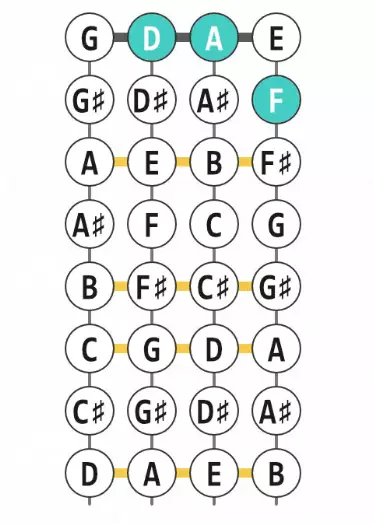
Credit: Violin Inspiration
Conveniently, D minor is just as straightforward as D major. Leaving the D and A-strings open as well, the only change is that you will slide your first finger down a half-step to the minor third F, rather than F sharp.
5. G Major
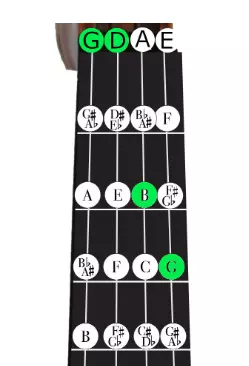
Credit: Violin Lounge
Like D, G Major utilizes the open strings as well. To play this chord you will leave the G and D-strings open and play B on the A-string with your first finger.
You can play the G on the E-string with your second finger, but this is optional as G is already being played on the open string. Adding in the high G with your second finger will change the color of the chord slightly.
6. G minor
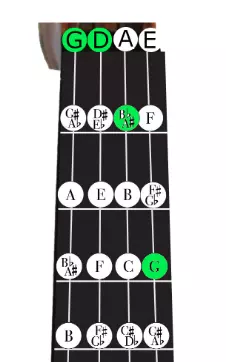
Credit: Violin Lounge
As you can see, there is a pattern in these chords as just like with D Major and minor, you simply have to slide down from B to B flat with your first finger to turn the chord into G minor, the melancholy-sounding version of G Major.
7. A Major
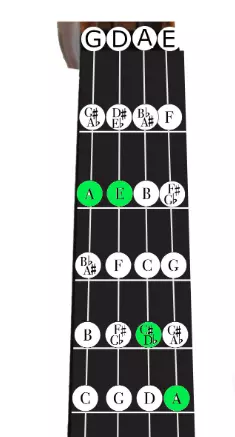
Credit: Violin Lounge
A Major is slightly more difficult than the previous chords because it uses no open strings and will require less comfortable finger positioning, but it is still very manageable.
You will play the lower A on the G-string with your first finger, the E on the D-string with your second, C sharp on the A-string with your third and you will play the high A, if desired, on the E-string with your fourth finger.
8. A minor
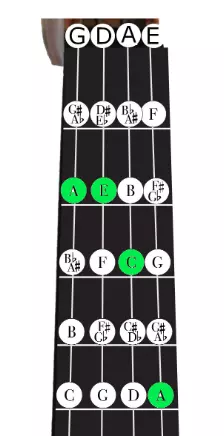
Credit: Violin Lounge
A minor is slightly more difficult to play than A Major as you slide down to C from C sharp on the A-string. This increases the gap between your third and fourth fingers, which can feel awkward at first.
This stretching of your fingers is excellent practice and will help you massively with quickly finding chords on the fretboard during play.
